What Root System Does a Tomato Plant Have?
If you’re planning to grow tomatoes, you need to understand the root system of a tomato plant to help grow healthy tomato plants that will yield bountiful fruits. And this article provides everything you need to know about the tomato root system.
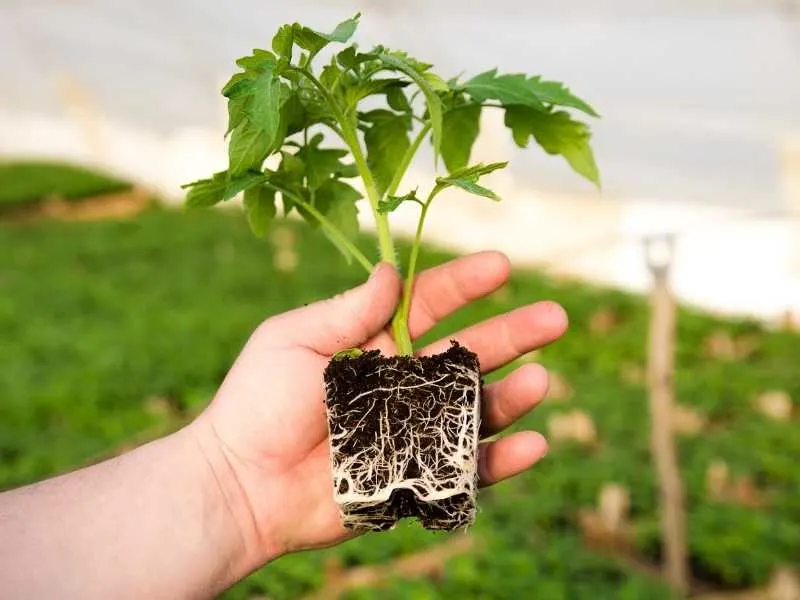
The common garden tomato (Lycopersicon esculentum commune) is a native perennial crop of tropical America.
Away from its native home, the tomato plant is a much-branched, rankly growing, annual crop that grows well in most well-drained soils.
The tomato plant is grown for its fruit and is very common in home gardens and commercially grown for profit.
Tomato plants are less exacting and can grow in all kinds of raised beds, large containers, and pots. Even so, they need proper care to develop a good root system to guarantee successful fruiting.
Related:
Tomato Plant Root Configuration (The Root System of Tomato Plants)
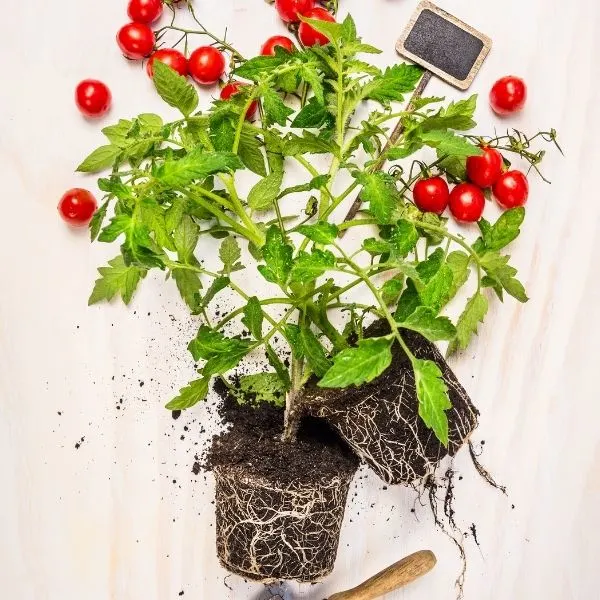
As with any plant, the roots make up about a quarter to a third of a tomato plant’s total weight. Though tomatoes are dicots, the plant may have different root systems depending on how it starts its life.
Typically, a single tomato plant can have several root configurations depending on the watering patterns and growing conditions while the plant is still young.
Seed-grown tomato plants will have a taproot system, characterized by a large, central root with branched smaller lateral roots.
If grown from cuttings, the plant develops fibrous roots, thread-like and of the same diameter, which mainly bind together around soil particles. Also, every part of the stem that touches moist soil develops adventitious roots. These extra roots reduce the plant’s overdependence on the taproot and result in an overall healthier plant.
It’s a popular technique to bury a part of the tomato plant stem under the surface to encourage the growth of extra roots.
How Deep Do Tomato Roots Grow?
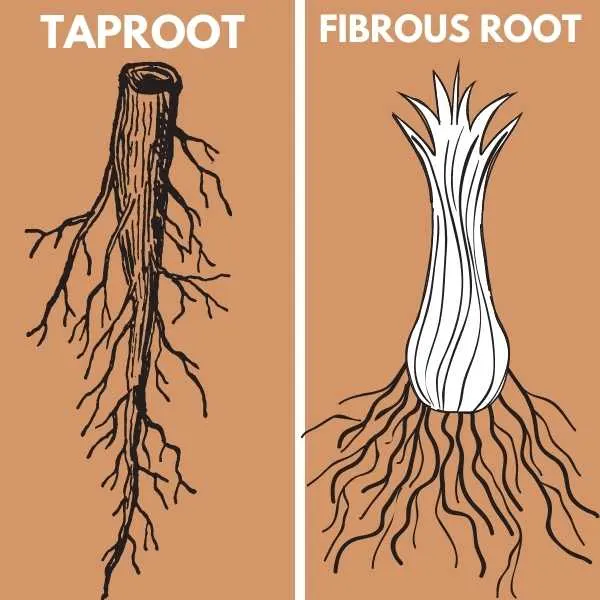
Taproots in tomato plants can go as deep as 3 feet or more, depending on several factors.
On the other hand, fibrous roots cannot go as deep, and they tend to bind together at the topsoil layers.
Tomato plants with taproot system may not be as exacting as tomato plants with fibrous root system but will require deeper well-drained soils to survive.
If you are planting your tomatoes in containers, consider the container’s height over width while growing seed-planted tomatoes, and vice versa for tomato cuttings.
Factors Affecting Tomato Plant’s Root Depth
A plant’s root depth affects its survivability and is determined by a number of factors. Below are some of the factors that affect the depth of a tomato plant:
Tomato Plant Variety
Different tomato varieties have varying root characteristics. Some varieties develop strong taproots that penetrate deep into the soil to provide nutrients and water to the plant.
Other varieties have weaker roots that don’t go as deep and thus depend more on the gardener for water and nutrients.
The same care is required if you plant your tomatoes from stem cuttings. However, all varieties require care to stay healthy and produce high-quality fruits.
Where You Grow the Plant
Naturally, taproots can go very deep into the soil, but the depth can be limited by the amount of soil depth available.
For instance, tomatoes grown in open fields or raised beds have more room to go deeper than those grown in containers.
When the taproot is prevented from stretching down by a container’s boundary, it tends to grow in circles at the bottom of the container. It won’t get any additional nutrients by coiling multiple times but will be extending as biologically expected.
Soil Type and Available Nutrients
Apart from the biological need to grow downwards, taproots do so to reach for more nutrients and water for the plant.
If the soil in your garden is nutrient-poor and loose, the taproots may stretch to maximum lengths.
But in cases where the soil is nutritious and well-drained, the taproots will go down 3 feet at most. Taproots for plants grown in healthy soils are thicker and not fully developed lengthwise but have many secondary lateral roots.
Also, very dense and compact soils are hard to penetrate, and the taproot grows laterally as with the container situation.
Encouraging Root Growth
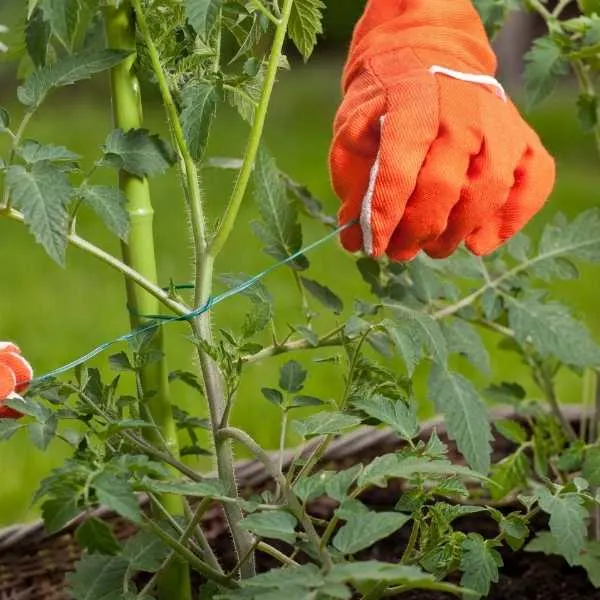
Apart from absorbing nutrients and water for the plant, the root system offers support by strongly anchoring the plant in the soil and stores the product of photosynthesis such as sugars and proteins.
Thus, it’s important to encourage strong root development in your tomato plants to boost their health.
The process starts while the plants are still young in the seedbeds. Normally, tomato seeds start life indoors in containers or a weather-elements-protected seedbed.
To encourage strong root growth, tomato seedlings are transplanted several times before planting outside. The main reason is to limit the growth of the taproot lengthwise to encourage the development of secondary lateral roots and fibrous roots on parts of the stems.
And it’s advisable to ensure that every transplanting lands the plant into a deeper container or a higher raised bed than the previous one to avoid the taproot coiling or growing laterally.
For example, plant the seeds in a 2-inch pot, then move the seedlings to a 4-inch, then to a 6-inch, and finally to outside planting.
Be careful not to damage the developing root system while transplanting, and keep the soil well nourished and watered regularly.
When planting, eliminate the leaves apart from the top two, and bury part of the stem to almost the leaves’ level. This way, the plant develops new roots on the buried stem to back up the taproot.
A deep-rooted plant is more likely to survive extreme conditions and fruit as expected.
You can add a well-mixed fertilizer, compost, or both into the planting holes to top-up the soil nutrient levels.
Also, cultivate soon after the plants pick up to promote soil aeration and eliminate competing weeds. It’s a common practice to do soil ridging to improve plant stability, and mulching to prevent soil moisture loss.
Tomato Plant Root Problem
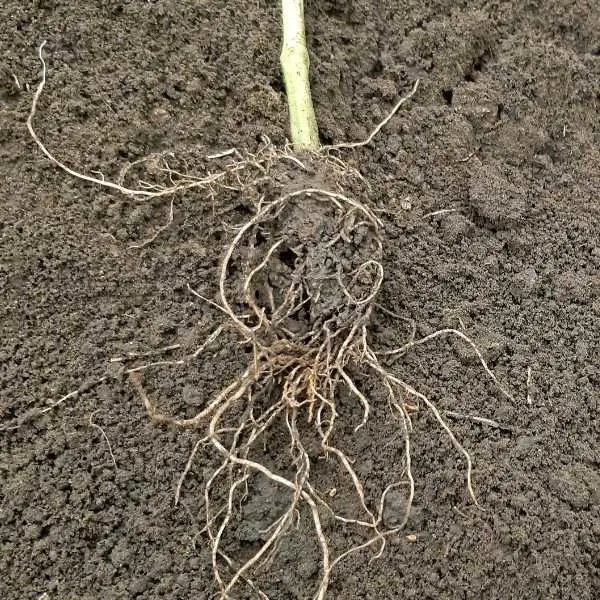
The tomato plant roots are as prone to diseases as other plants. Most common root diseases originate from poor soil preparation that lowers air and drainage properties, and insects that prey on plant roots.
Common tomato root problems include corky root, fusarium crown rot, southern bacterial wilt, and phytophthora root rot.
Prevention and Solution
Most tomato roots’ problems can be eliminated through proper soil preparation to encourage drainage and aeration before planting.
Also, ensure you eliminate weeds that may harbor disease-causing insects. If fungal infections are suspected or caught early, fungicides may help the plants recover.
Other prevention methods include crop rotation and the introduction of beneficial nematodes that prey on harmful insects.
But take care not to crop-rotate tomatoes with other crops with similar diseases like cotton or okra plants.
Final Thoughts on the Root System of a Tomato Plant
And there you have it, having a good understanding of how the tomato, or any other plant’s root system works will help you grow healthy plants. As we’ve established, tomatoes can have a fibrous or tap root system depending on how you grow them. Soil type, depth, and tomato varieties affect how deep they grow. To encourage healthy root growth, transplant them several times. And to prevent diseases, prepare your soils well before planting, use fungicides, rotate crops carefully, and utilize beneficial nematodes.
Related Articles:
- Tips for Growing Tomatoes Indoors
- How to Grow Tomatoes in a Grow Bag – A Complete Guide
- How Long Does a Tomato Plant Live?
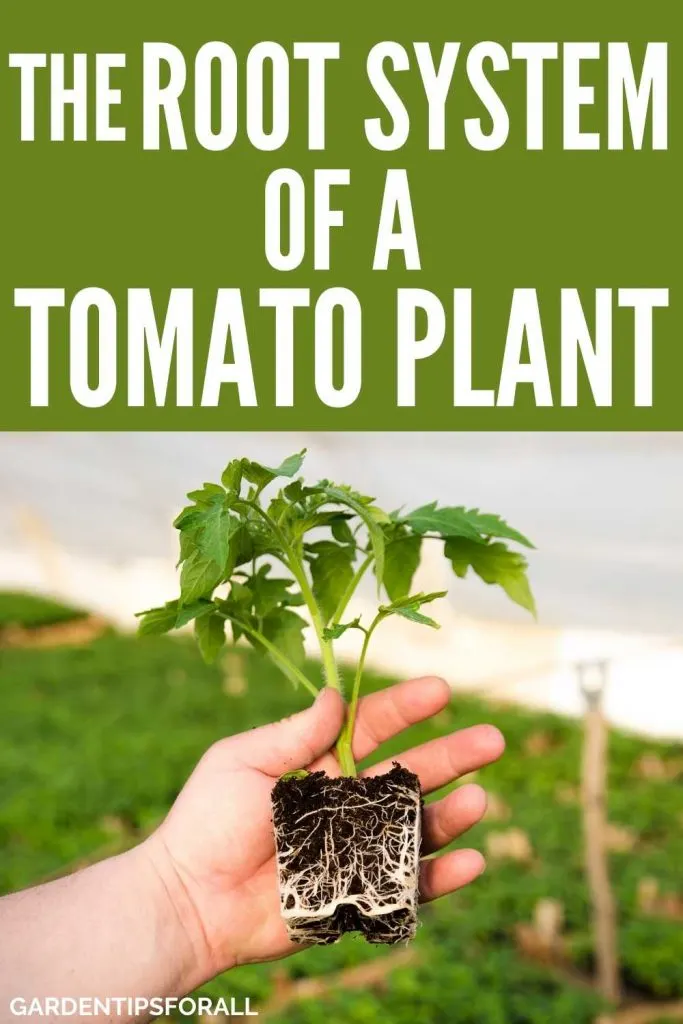
References:
- https://soilandhealth.org/wp-content/uploads/01aglibrary/010137veg.roots/010137ch26.html
- Henderson, George. The Farming Manual: A Guide to Farm Work.
- https://journals.ashs.org/horttech/view/journals/horttech/27/3/article-p319.xml
- https://www.kzndard.gov.za/images/Documents/Horticulture/Veg_prod/tomato.pdf
